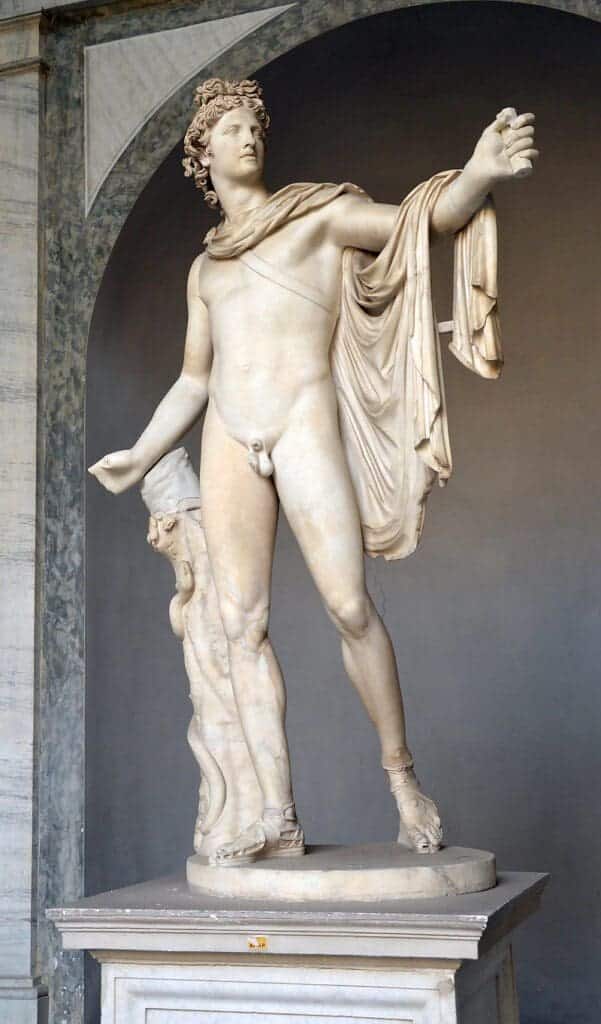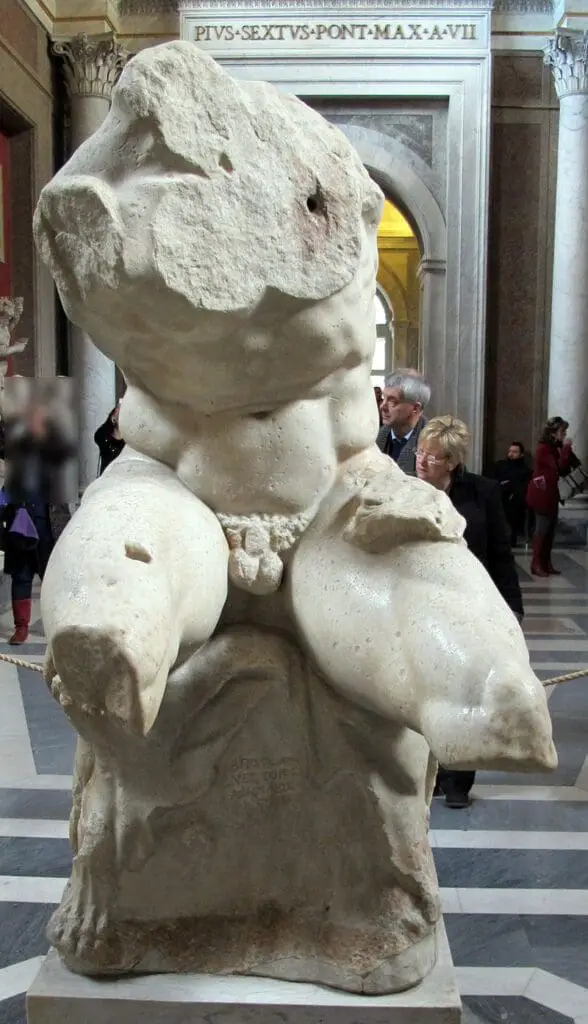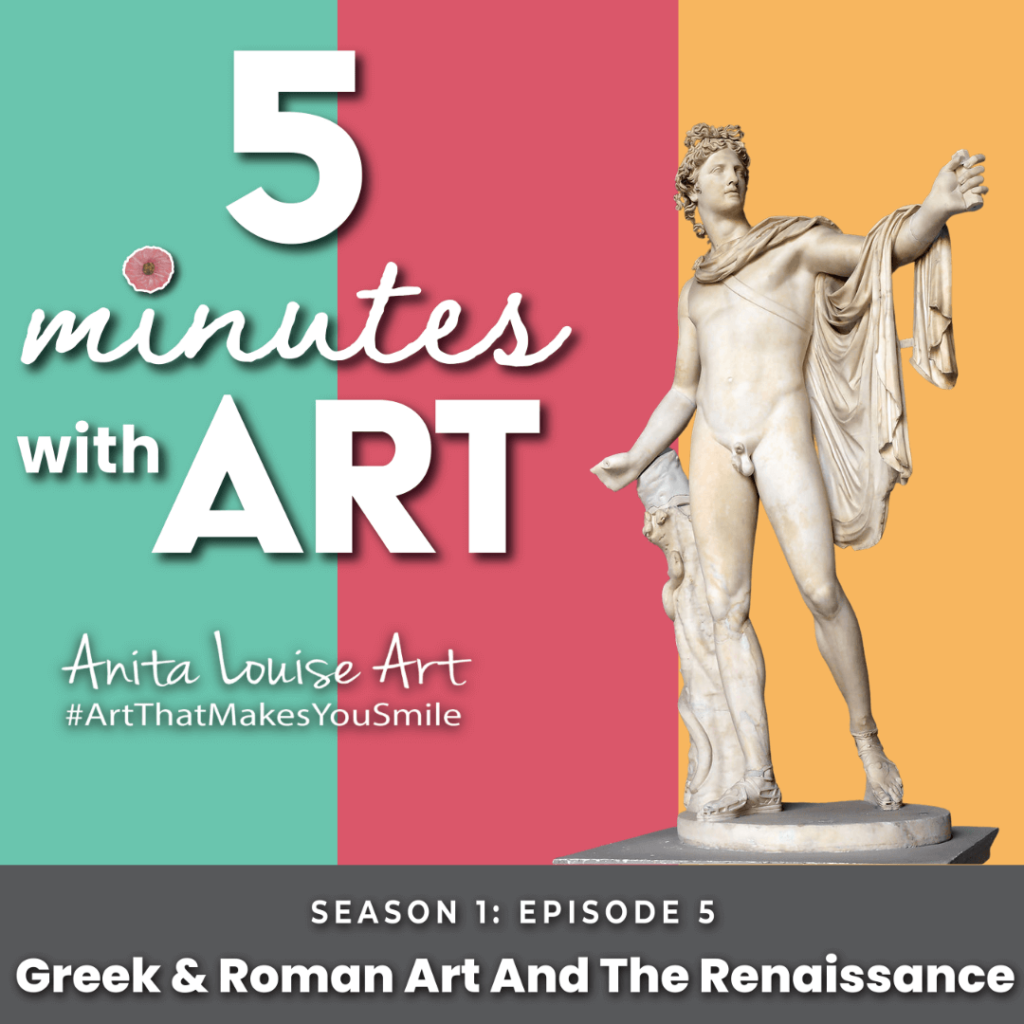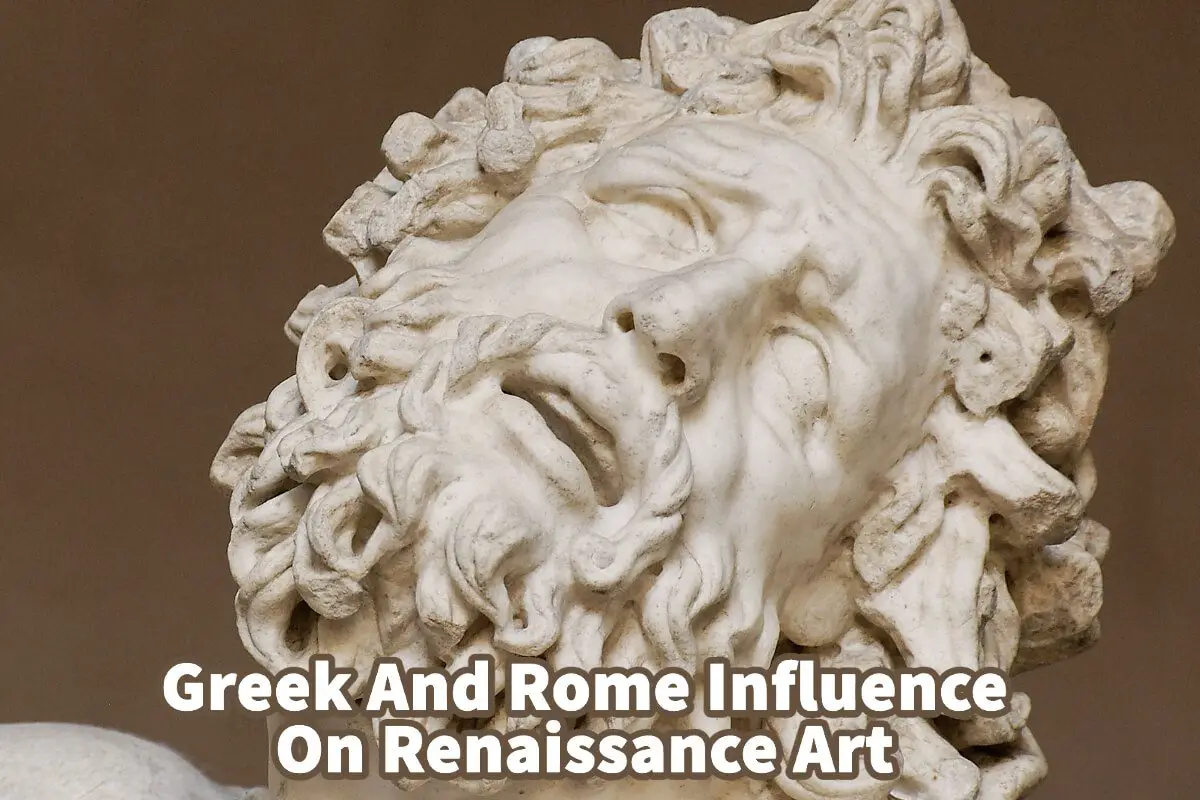Renaissance art is known as the rebirth of art. Greek and Roman classical artworks influenced Renaissance art.
The Renaissance, a period of rebirth, was greatly influenced by the classical ancient arts of Greece and Rome. During this period, many Greek and Roman works of art were also rediscovered; this helped rediscover realism, symmetry, and harmony in the arts. Greek and Roman art also influenced the subject matter of many Renaissance artists.
Table of Contents
- The Rebirth Of Greek And Roman Influences
- Significant Greek And Roman Works Of Art That Influenced The Renaissance
- The Renaissance Influences On Greek And Roman Art
- The Everlasting Echoes of the Renaissance: 10 Reasons for its Continued Importance
- Frequently Asked Questions
- Related Questions
The Rebirth Of Greek And Roman Influences
The Renaissance period was a time of rebirth; included in this rebirth were Greek and Roman Influences in the arts, including Greek and Roman architecture and sculptures.
These ancient works of art inspired many Renaissance artists. Suddenly, what had once been a lost ancient work was being discovered, and those discoveries helped show these artists things that were possible that they had never thought about before.
Pope Julius II was the Pontificate from 1503 to 1513. Pope Julius was very fond of antiquities and purchased many classical works. Pope Julius II built the Belvedere Court to display many newly found antiquities and classical statues.
The Belvedere Court, located in the Vatican Palace in Rome, is probably the first museum-like structure to house works of art, including many Greek and classical Roman statues.
The artist Michelangelo was also in great favor with the pope. This gave him incredible access to these Greek and classical Roman works and helped inspire him and his works of art.
Even though other Renaissance artists did not have the same access, the artwork they saw Michelangelo produce also inspired them.
Significant Greek And Roman Works Of Art That Influenced The Renaissance
Several influential works that profoundly affected the Renaissance artists were found during the Renaissance period. These works of art show the artists things they never thought possible before, so they used this inspiration in their works of art.
Here are three of the most important Greek and Roman statues found in the Renaissance era and placed in the Belvedere Court by the Popes.
Apollo Belvedere

The Apollo Belvedere is an excellent example of classical Greek arts and sculpture. The Apollo statue shows the best of nature, art, and humanity – all rolled into one figure.
The statue is a second-century copy of a Greek bronze original. It was hidden for a while but found in the late 15th century and acquired by the Vatican in 1511.
The Apollo is a perfect representation of the Greek and Classical Roman arts. You can see how realistic this statue is with the intricate folds of Apollo’s clothing and the perfection of his male figure and body.
Also, with Appollo’s stance, you can see how one of the legs is bent and almost like he is ready to move it anytime. This statue is seen as one of the nearly perfect human figure representations.
What makes this a perfect representation of the classical style is that Apollo is calm and peaceful. Apollo is not engaged in any action or emotion but is instead calmly posing.
The statue is considered a perfect representation of the classical style. It also represented everything the Renaissance artists were trying to achieve: the ideal human form and the realistic details in a classical stance.
Laocoon

Laocoon is a Roman copy in marble of Greek mythology; this statue was made between 42 and 20 BC. It is rumored to have been made by three great sculptors – Agesander, Athenodoros, and Polydorus.
The statue was found in 1506 near Nero’s Golden House site. We are not sure if Nero or another wealthy Roman owned it.
The unearthing of the statue was an essential event in Rome in 1506. Michelangelo was in Rome at that time to witness the unearthing of the statue.
Pope Julius II, a lover of antiquity, immediately acquired the statue. The city celebrated with church bells being rung throughout Rome as the Laocoon statue was taken to the Vatican, where the statue still resides.
This statue profoundly affected Michelangelo and his work as a favorite artist of the Vatican and the Pope. Michelangelo spent a lot of time studying this Laocoon statue.
The statue portrays three people -notably the Priest Laocoon and his two sons – desperately struggling to stay alive. You can see the expressions and pain on their faces.
The statues showed muscular movement and power and not just strength. It also showed climax and emotion; this kind of climax and emotion in a work f art influenced Michelangelo and many other Renaissance artists.
Belvedere Torso

Unlike the ceremony that surrounded the unearthing of the Laocoon statues, the Belvedere Torso was also unearthed in 1523, but there was no ceremony surrounding its unearthing.
The statue Is a Roman copy of a Greek original, and it’s dated from the first century BC. We are not exactly sure who’s Torso it is, but many believe it was the Greek Gods Hercules or Apollo.
Even though the statue is just a Torso, Michelangelo admired it immensely. He often referred to the statue as his teacher and used copies of the pose throughout his future work, notably in the Sistine Chapel.

Listen To Our Podcast About Greek & Roman Art And The Renaissance by clicking here.
The Renaissance Influences On Greek And Roman Art
During the Renaissance, artists began appreciating Greek and classical Roman ideals. These classical ideals included things such as realism, symmetry, and harmony.
When Rome was undergoing reconstruction during the Renaissance era, many important works of art were rediscovered. Areas of Rome that had once been desolated and ruined for over 1,000 years saw people finding valuable statues – sometimes while plowing a field or expanding a foundation for a building.
These classical artistic findings gave the Renaissance artists massive inspiration and even imagination. With those essential discoveries came a renewed interest in the Greek and Roman Classical forms and art.
The Renaissance also showed that the arts could show the physical perfection of both the body and spirit. The Renaissance artists tried to show perfectionism in their works of art.
The Renaissance also showed how strong emotion could be part of the arts. Art subjects were painted to show human emotions.
There is no doubt that the Renaissance era was a time that was greatly influenced by Greek and Roman classical arts.
The Everlasting Echoes of the Renaissance: 10 Reasons for its Continued Importance
The Renaissance, a period spanning roughly from the 14th to the 17th century, witnessed an unprecedented surge in artistic, cultural, scientific, and philosophical achievements.
But why does this era, centuries past, still command such reverence and attention in today’s age?
Here are ten reasons that elucidate the undying significance of the Renaissance:
- Foundation of Modern Thought: The Renaissance laid the groundwork for modern secular thought. It championed reason, inquiry, and individualism over blind faith, paving the way for modern science, politics, and individual rights.
- Artistic Revolutions: The period gave birth to some of history’s most celebrated artists – Leonardo da Vinci, Michelangelo, Raphael, and Titian, to name a few. Their innovative techniques and masterpieces continue to inspire and influence contemporary artists.
- Birth of Humanism: The Renaissance fostered humanism, emphasizing the value and agency of human beings. This philosophy influenced literature, art, education, and even political thought, positioning humans at the center of the cultural narrative.
- Scientific Advancements: Figures like Copernicus, Galileo, and Kepler challenged established views, transforming our understanding of the universe. Their revolutionary ideas laid the foundation for modern astronomy, physics, and biology.
- Literary Blossoming: Literary giants like Shakespeare, Dante, and Erasmus emerged, creating works that explored intricate human emotions and experiences. Their writings remain central to literature studies worldwide.
- Print Revolution: Gutenberg’s invention of the printing press democratized knowledge, allowing for the mass production of books. This technological leap significantly accelerated the spread of ideas, fostering an informed public.
- Architectural Marvels: Renaissance architecture, with its symmetry, proportion, and geometry, reflected the era’s emphasis on balance and beauty. Its principles continue to influence modern architectural designs.
- Education and Scholarship: The period saw a revival in classical learning and the establishment of institutions that would evolve into today’s universities. The multidisciplinary approach to education, characteristic of the Renaissance, is still a valued concept.
- Cultural Exchange: The Renaissance witnessed increased interactions between different cultures, especially during its later stages. This exchange enriched European arts and sciences with perspectives from the broader world, highlighting the benefits of cultural diversity and exchange.
- Questioning Authority: The era planted seeds of dissent against unquestioned authority, be it religious or monarchic. This spirit of questioning played a pivotal role in subsequent movements, from the Reformation to the Enlightenment.
The Renaissance is not just a historical epoch confined to textbooks but an ever-relevant fountainhead of ideas, innovations, and inspirations. Its values of inquiry, creativity, and human potential resonate deeply in today’s world, making it an era of continued importance for scholars, artists, scientists, and thinkers alike.
Anita Louise Art is dedicated to art education, great artists, and inspiring others to find and create their art. We love art that uplifts and inspires. #ArtToMakeYouSmile! #ArtToMakeYouHappy!
If you want to see any of my art, you can find out more by clicking here. If you are interested in what inspires me and my paintings, you can discover more by clicking here.
We have a free newsletter and would love you to be part of our community; you can subscribe to the newsletter by clicking here. If you have any questions, I would be happy to talk to you. You can reach me, Anita, by clicking here.
Subscribe to our Anita Louise Art YouTube Channel filled with great videos and information by clicking here.
Join us for our podcast “5 Minutes With Art.” Spend just 5 minutes a week with us to discover and learn about great art and artists. You can find out more about our podcast by clicking here.
Frequently Asked Questions
How was classical influence seen in Renaissance art?
Classical influence was seen in Renaissance art through the use of classical motifs, such as ancient Greek and Roman mythology, and the revival of classical styles, such as the use of perspective, proportion, and symmetry.
Was Renaissance art strongly influenced by Greek and Roman art?
Yes, Renaissance art was strongly influenced by Greek and Roman art. The artists of the Renaissance looked to the classical works of the Greeks and Romans for inspiration, and they often used classical motifs and styles in their own works.
How did the classical works of the Greeks and Romans influence Renaissance thinkers and artists?
The classical works of the Greeks and Romans influenced Renaissance thinkers and artists by providing them with a new source of inspiration and a new way of thinking about art and culture. The revival of classical styles and motifs helped to shape the artistic and cultural landscape of the Renaissance.
Why were Renaissance artists influenced by ancient Greece?
Ancient Greece influenced Renaissance artists because they saw it as a source of inspiration and a model for their own artistic and cultural achievements. They admired the Greeks for their achievements in art, literature, philosophy, and science and sought to emulate their success.
What were some of the Greek and Roman motifs used in Renaissance art?
Some of the Greek and Roman motifs used in Renaissance art include classical mythology, such as the depiction of the gods and heroes. Classical architecture, such as columns and arches, and classical literature, such as the works of Homer and Virgil.
How did the Greek and Roman influence on Renaissance architecture manifest itself?
The Greek and Roman influence on Renaissance architecture manifested itself through the use of classical motifs, such as columns and arches, and the revival of classical styles, such as symmetry and proportion. Renaissance architects also studied classical texts on architecture, such as Vitruvius’ De Architectura.
How did Renaissance artists use classical motifs in their works?
Renaissance artists used classical motifs in their works by incorporating elements of classical mythology, literature, and art into their own works. They also used classical styles, such as perspective and proportion, to create a sense of realism and balance in their works.
What were some of the most significant examples of classical influence on Renaissance art?
Some of the most significant examples of classical influence on Renaissance art include Michelangelo’s David and the Sistine Chapel ceiling, Leonardo da Vinci’s Vitruvian Man, and Raphael’s The School of Athens. These works all demonstrate the influence of classical styles and motifs on Renaissance art.
How did Renaissance art reflect the ideals of classical culture?
Renaissance art reflected the ideals of classical culture by emphasizing the beauty and harmony of the human form, the use of perspective and proportion to create a sense of balance and order, and the depiction of classical themes, such as mythology and literature.
What was the significance of the rediscovery of ancient Greek and Roman works during the Renaissance?
The rediscovery of ancient Greek and Roman works during the Renaissance was significant because it marked a revival of interest in classical culture and learning. It led to the development of new artistic and cultural movements, such as humanism and the Renaissance, and helped to shape the intellectual and cultural landscape of Europe.
How did the classical influence on Renaissance art compare to other artistic movements in history?
The classical influence on Renaissance art was unique in its revival of classical styles and motifs and its emphasis on realism, balance, and harmony. While other artistic movements throughout history have also been influenced by classical culture, such as the neoclassical movement of the 18th and 19th centuries, the Renaissance marked a particularly significant revival of classical culture and learning that had a profound impact on European art and culture.
Related Questions
Why Was The Human Figure So Important To Renaissance Art?
The human figure was significant to the Renaissance artists; they showed the realistic human form. They understood that to show the human form adequately, they needed to study it and understand it better. The classical statues of Greek and Rome greatly influenced these Renaissance artists and their desire to depict the perfect human form. It can be said the Renaissance artist started on their study of the human figure where the Greek and Roman artists left off.
By clicking here, you can learn more by reading Why Was The Human Figure So Important To Renaissance Art?.
British Renaissance Artists And Art
The Renaissance in Britain, known as the English Renaissance, took place from the early 16th century to the early 17th century. It took place later than the Italian Renaissance. It was also a complicated renaissance movement, and paintings were not emphasized as much as music and literature. One of the famous artworks that did come out of this era was portrait miniatures.
By clicking here, you can learn more by reading British Renaissance Artists And Art.

